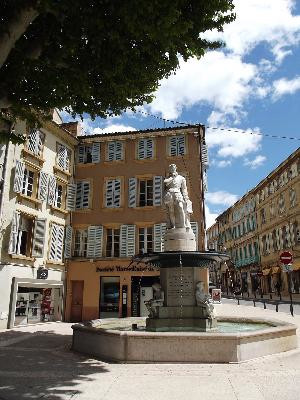Bouches-du-Rhône en Paysages - Salon-de-Provence, at Clair des Fontaines
Sport Pedestrian sports Hiking itineraryPresentation
The trail "Au clair des fontaines" (In the light of the fountains) takes you from fountain to fountain, between the city center and the pedestrian streets, passing through the parks. Enjoy these oases in the city, witnesses of the typical heritage of Salon.
"During the Renaissance, Adam de Craponne dug a canal to divert the Durance River and bring water to the city. In addition to the important agricultural and economic development, this system allowed the city to be supplied with drinking water. Over the centuries, fountains were built, allowing Salon-de-Provence to benefit from the precious resource despite the dry climate.
1- From the parking lot of Empéri, take on your left the Cours Gimon.
2- Erected in 1859 in honor of the naturalist and geologist Robert de Lamanon (1752-1787), this fountain is sculpted with plants on three sides and a female mask on the side from which the water gushes. It is topped by a decorative metal vase.
3- Go left on the Cours Gimon. At 50 m, you will find another fountain.
A fountain with a more modern and discreet architecture. Built during the renovation of the downtown courtyards in 2007, it symbolizes Adam de Craponne's canal that runs under the current courtyards.
4- Opposite this development stands the Adam de Craponne fountain.
Fountain Adam de Craponne (1526-1576) benefactor hydraulic engineer whose statue surmounts this fountain. At its foot, four geniuses frame two texts, one in Provencal, the other in Latin. Sculpted by Marius Ramus, it was inaugurated in 1854. The names of the 22 communes that contributed financially to its erection are also inscribed. Continue down the Cours Victor Hugo. At 60 m, you will come across another fountain.
This fountain was erected during the extension of the courtyards in 2007.
5- Continuing on the course, you will see on your right the mossy fountain.
This fountain is emblematic of the city. This work of Maurice Bernus was built in 1775. Hidden in the hollow of the moss (capillaries) which gives it its nickname, this fountain is topped by two basins. The larger one is decorated with four masks spitting water, framed by four lions' heads. Cross diagonally the terrace of the cafés and turn to the right, behind the café des arts.
6- Take the second street on your left, rue Ponsard. After 50 m, on your right, enter the place Louis Blanc to observe its fountain dating from 1770.
The same phenomenon as the mossy fountain takes place here: the two superimposed basins are covered with limestone on which grows mainly capillaries.
7- Take the street Palamard, then right on the street "Frères Kennedy". A few meters farther, you will see the fountain of Puits du Mouton.
It was built in 1761 in the place of a well, to answer the need of the inhabitants for a drinking water point.
8- Go on the street "Frères Jourdan", on the left of the fountain. You arrive at the place des Martyrs, on which stands a bandstand and its fountain.
This bandstand was once located on the Place du Général De Gaulle, towards which you are now heading.
Indeed, 50 m after the bandstand, continue on the rue des Frères Jourdan. You can cross or go around the place du Général de Gaulle.
Built in 1878, it was at the time a place used as a cattle market. In 1900, it was transformed into a park, sheltering today various species among which plane trees, magnolias, or Ginko Baloba. An imposing fountain with jets was built in order to replace the kiosk. At the exit of the park, after the fountain, take opposite rue des Fileuses de soie. Then turn to the left, Boulevard de la République.
9- On your left, you will see another fountain built when the courtyards were widened. Take the first street on your right, rue Arlatan. Continue straight ahead, in the street Trez Castel. Enjoy the ornaments installed by the residents, Virginia creeper and rosebushes for the main species.
At the end of the street, you can admire the last wash house of Salon de Provence and its fountain, and enjoy the shade of its plane tree. Go back to the rue du Moulin d'Isnard (50 m after the wash house). Turn right and go up the street. When you arrive at the Place de l'horloge, turn right and take the alley Montée André Viallat.
You arrive at the foot of the castle of Emperi ', on the place of Centuries. Enjoy the panorama composed of the water wall, the castle and the surrounding vegetation (photo f6): olive trees, green and white oaks, acacia, bignones to name but a few. Then take the street with your back to the water wall, in the direction of the Eglise St Michel. Take the street "rue du Bourg Neuf", on your right after the church.
10- You arrive on the place de la Révolution and its fountain, built in 1903 at the request of the inhabitants for a drinking water point. It is composed of an obelisk, decorated with a palm and surmounted by a bust of Marianne. Then take the street Bastonenq behind the church. You arrive at the crossing with the street J. Blanchard, which goes up on the left towards the Tourist Office.
1- From the parking lot of Empéri, take on your left the Cours Gimon.
2- Erected in 1859 in honor of the naturalist and geologist Robert de Lamanon (1752-1787), this fountain is sculpted with plants on three sides and a female mask on the side from which the water gushes. It is topped by a decorative metal vase.
3- Go left on the Cours Gimon. At 50 m, you will find another fountain.
A fountain with a more modern and discreet architecture. Built during the renovation of the downtown courtyards in 2007, it symbolizes Adam de Craponne's canal that runs under the current courtyards.
4- Opposite this development stands the Adam de Craponne fountain.
Fountain Adam de Craponne (1526-1576) benefactor hydraulic engineer whose statue surmounts this fountain. At its foot, four geniuses frame two texts, one in Provencal, the other in Latin. Sculpted by Marius Ramus, it was inaugurated in 1854. The names of the 22 communes that contributed financially to its erection are also inscribed. Continue down the Cours Victor Hugo. At 60 m, you will come across another fountain.
This fountain was erected during the extension of the courtyards in 2007.
5- Continuing on the course, you will see on your right the mossy fountain.
This fountain is emblematic of the city. This work of Maurice Bernus was built in 1775. Hidden in the hollow of the moss (capillaries) which gives it its nickname, this fountain is topped by two basins. The larger one is decorated with four masks spitting water, framed by four lions' heads. Cross diagonally the terrace of the cafés and turn to the right, behind the café des arts.
6- Take the second street on your left, rue Ponsard. After 50 m, on your right, enter the place Louis Blanc to observe its fountain dating from 1770.
The same phenomenon as the mossy fountain takes place here: the two superimposed basins are covered with limestone on which grows mainly capillaries.
7- Take the street Palamard, then right on the street "Frères Kennedy". A few meters farther, you will see the fountain of Puits du Mouton.
It was built in 1761 in the place of a well, to answer the need of the inhabitants for a drinking water point.
8- Go on the street "Frères Jourdan", on the left of the fountain. You arrive at the place des Martyrs, on which stands a bandstand and its fountain.
This bandstand was once located on the Place du Général De Gaulle, towards which you are now heading.
Indeed, 50 m after the bandstand, continue on the rue des Frères Jourdan. You can cross or go around the place du Général de Gaulle.
Built in 1878, it was at the time a place used as a cattle market. In 1900, it was transformed into a park, sheltering today various species among which plane trees, magnolias, or Ginko Baloba. An imposing fountain with jets was built in order to replace the kiosk. At the exit of the park, after the fountain, take opposite rue des Fileuses de soie. Then turn to the left, Boulevard de la République.
9- On your left, you will see another fountain built when the courtyards were widened. Take the first street on your right, rue Arlatan. Continue straight ahead, in the street Trez Castel. Enjoy the ornaments installed by the residents, Virginia creeper and rosebushes for the main species.
At the end of the street, you can admire the last wash house of Salon de Provence and its fountain, and enjoy the shade of its plane tree. Go back to the rue du Moulin d'Isnard (50 m after the wash house). Turn right and go up the street. When you arrive at the Place de l'horloge, turn right and take the alley Montée André Viallat.
You arrive at the foot of the castle of Emperi ', on the place of Centuries. Enjoy the panorama composed of the water wall, the castle and the surrounding vegetation (photo f6): olive trees, green and white oaks, acacia, bignones to name but a few. Then take the street with your back to the water wall, in the direction of the Eglise St Michel. Take the street "rue du Bourg Neuf", on your right after the church.
10- You arrive on the place de la Révolution and its fountain, built in 1903 at the request of the inhabitants for a drinking water point. It is composed of an obelisk, decorated with a palm and surmounted by a bust of Marianne. Then take the street Bastonenq behind the church. You arrive at the crossing with the street J. Blanchard, which goes up on the left towards the Tourist Office.
Opening period (s)All year round.
Practical information
- Route :
- Distance (km) : 1.5
- Daily duration (minutes) : 40
- Route : BOUCLE
- Visits :
- Average individual visit length (minutes) 40
- Levels of sporting experience :
- Level green –very easy
- Natures field :
- Hard coating (tar, cement, flooring)
Tarifs
Free access.
Contact
Bouches-du-Rhône en Paysages - Salon-de-Provence, at Clair des Fontaines
Parking de l'Empéri
13300
Salon-de-Provence
Phone : +33 4 90 56 27 60
Destination
Bouches-du-Rhône en Paysages - Salon-de-Provence, au Clair des Fontaines
Parking de l'Empéri
13300
Salon-de-Provence
GPS coordinates
Latitude : 43.639958
Longitude : 5.098967



